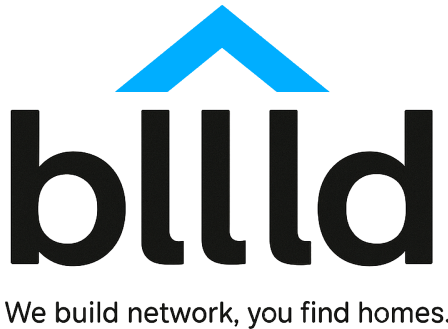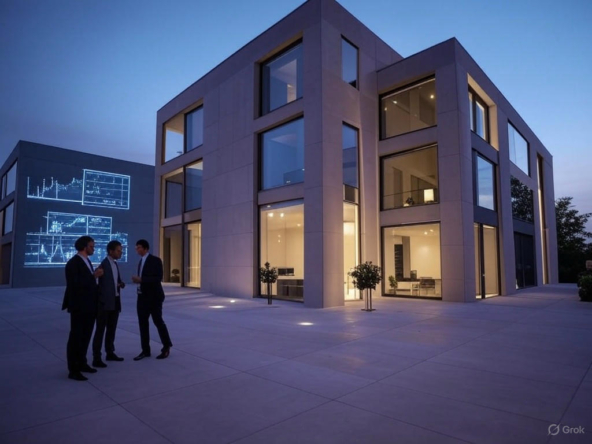Luxembourg’s tram expansion is more than just a transportation upgrade—it’s a game-changer for the real estate market. As the tram network grows, connecting key neighborhoods and business districts, it’s reshaping property values, attracting investors, and transforming urban living. In this blog, we’ll explore how the tram expansion is influencing real estate prices in Luxembourg, with insights into market trends, investment opportunities, and the role of sustainable urban development. At bllld.lu, we’re committed to helping you navigate this dynamic market with expert real estate solutions tailored to your needs.
The Tram Expansion: A Catalyst for Urban Transformation
Luxembourg’s tram network, which began operations in 2017, is rapidly expanding to connect the city’s core with its surrounding areas. The first phase linked Kirchberg to the city center, and ongoing extensions are set to reach Findel Airport, Cloche d’Or, and other key districts by 2026. This ambitious project aims to reduce traffic congestion, promote sustainable transport, and enhance connectivity across the Grand Duchy.
The tram’s impact goes beyond mobility. By improving access to previously less-connected areas, it’s driving demand for residential and commercial properties. According to STATEC, Luxembourg’s real estate prices have risen by an average of 14.5% annually in recent years, with areas near tram stops experiencing even sharper increases. The tram expansion is a key driver, as it signals economic confidence and urban growth, attracting both local and international investors.
Why Connectivity Matters in Real Estate
Connectivity is a critical factor in real estate valuation. Properties near efficient public transport, like tram stops, are more desirable due to reduced commute times, lower reliance on cars, and access to amenities. The tram expansion makes neighborhoods like Bonnevoie, Limpertsberg, and Cloche d’Or more accessible, boosting their appeal for homebuyers, renters, and businesses.
For example, the Golden Horn tram project in Istanbul tripled property prices in nearby areas due to improved connectivity. Luxembourg is witnessing a similar trend, with properties within a 10-minute walk of tram stops commanding premiums of up to 20% compared to less accessible areas. At bllld.lu, we’ve seen firsthand how proximity to tram lines influences buyer preferences and investment decisions.
How the Tram Expansion Impacts Real Estate Prices
The tram expansion is reshaping Luxembourg’s real estate market in several ways. Below, we break down the key impacts and their implications for investors, developers, and homeowners.
1. Rising Property Values in Tram-Adjacent Areas
When a new tram line is announced, property values in the surrounding areas often surge. This phenomenon, known as the “tram effect,” occurs because improved connectivity signals economic potential. In Luxembourg, neighborhoods like Kirchberg and Cloche d’Or have seen significant price appreciation since the tram’s introduction.
- Kirchberg: Once a business district, Kirchberg is now a residential hotspot thanks to the tram’s connection to the city center. Apartments near tram stops have seen price increases of 15–20% since 2017.
- Cloche d’Or: This emerging district, set to be fully connected by 2024, is attracting luxury developments. Median home prices have risen by 18% in the past two years, driven by the promise of tram access.
- Bonnevoie: A historically affordable area, Bonnevoie is experiencing gentrification as the tram line enhances its accessibility. Rental yields have increased by 10%, making it a favorite for investors.

These trends align with global patterns. For instance, when Amazon announced its HQ2 in Arlington, Virginia, nearby home prices surged due to anticipated infrastructure improvements. In Luxembourg, the tram expansion is a similar catalyst, driving demand for both residential and commercial properties.
Image Suggestion: A vibrant infographic showing a map of Luxembourg with tram lines highlighted, color-coded to indicate areas with the highest price appreciation (e.g., Kirchberg in green, Cloche d’Or in blue). Include percentage increases for key neighborhoods.
2. Increased Demand for Commercial Real Estate
The tram expansion isn’t just boosting residential markets—it’s also fueling commercial real estate growth. Businesses are eager to establish offices, retail spaces, and mixed-use developments near tram stops to capitalize on foot traffic and accessibility.
- Retail and Hospitality: Cafes, restaurants, and shops near tram stops in the city center and Kirchberg are thriving, with commercial rents rising by 12% since 2020.
- Office Spaces: Companies, especially in finance and tech, are leasing spaces in tram-accessible areas like Cloche d’Or, where new office towers are under construction.
- Mixed-Use Developments: Developers are creating projects that combine residential, office, and retail spaces, catering to the demand for live-work-play environments.
At bllld.lu, we’ve noticed a surge in inquiries for commercial properties near tram lines, particularly from startups and international firms relocating to Luxembourg. The tram’s role in connecting business hubs makes it a magnet for economic activity.
Image Suggestion: A photo of a bustling tram stop in Kirchberg, with modern office buildings and retail storefronts in the background. Overlay text highlighting the 12% rise in commercial rents.
3. Gentrification and Its Challenges
While the tram expansion drives economic growth, it also raises concerns about gentrification. As property values rise, affordable housing becomes scarce, and long-time residents may be priced out. Bonnevoie, for example, is transitioning from a working-class neighborhood to a trendy, tram-accessible hotspot, with luxury condos replacing older buildings.
This mirrors global trends, such as Austin, Texas, where tech-driven expansion led to a real estate frenzy but displaced some residents. In Luxembourg, policymakers are addressing these challenges through initiatives like subsidized housing and zoning reforms, but the pressure on affordable units remains.
For investors, gentrification presents opportunities to acquire properties in up-and-coming areas before prices peak. However, it’s crucial to balance profit motives with social responsibility. At bllld.lu, we advocate for sustainable development that benefits both investors and communities.
Image Suggestion: A split-image contrast showing Bonnevoie’s transformation—on one side, historic row houses; on the other, sleek new apartments near a tram stop. Include a caption about balancing growth and affordability.
4. Sustainable Development and Green Living
The tram expansion aligns with Luxembourg’s commitment to sustainability. By reducing car dependency, the tram lowers carbon emissions and promotes eco-friendly urban living. This resonates with buyers and renters who prioritize green lifestyles, further driving demand for properties near tram lines.
- Energy-Efficient Buildings: Developers are incorporating smart technologies, like IoT-enabled lighting and solar panels, into tram-adjacent projects to attract eco-conscious buyers.
- Walkable Communities: Neighborhoods like Cloche d’Or are designed with pedestrian-friendly layouts, enhancing their appeal for families and young professionals.
- Higher Rental Yields: Properties with green certifications near tram stops command higher rents, with yields up to 8% in prime areas.
The link between sustainable investment and financial returns is clear. At bllld.lu, we specialize in identifying properties that combine sustainability with strong investment potential, helping clients achieve both financial and environmental goals.
bllld.lu — Smarter Rentals. Smarter Living. Smarter Luxembourg.



